Disclosure: This article contains affiliate links. We may earn a commission from purchases at no extra cost to you, which helps our travel content.
Standing at the top of the Royal Mile with my three kids—Mia (15), Kai (12), and Lina (9)—I felt my late wife Eliza's Scottish heritage come alive around us. The Castle looms impressively, drawing crowds like a celestial body with its own gravitational pull. But as any good detective knows, the real stories often hide in plain sight. Five years ago, after Eliza passed, I promised to continue our family's educational adventures, and Edinburgh became our first international journey in her memory. The Royal Mile—that sloping thoroughfare connecting Edinburgh Castle to Holyrood Palace—holds secrets in its wynds, closes, and centuries-old stonework that most visitors rush past. Today, I'm sharing the investigative work my kids and I have conducted over three visits to this remarkable street, uncovering historical treasures that tell Scotland's story far beyond the postcard views. Whether you're visiting as a couple seeking connection through history or simply wanting to experience Edinburgh like a local, these hidden gems will transform your understanding of this magnificent city.
The Writers' Museum & Lady Stair's Close
Tucked away in Lady Stair's Close, a narrow alleyway that most tourists walk past without a second glance, sits one of my family's favorite discoveries. The Writers' Museum celebrates three of Scotland's literary giants: Robert Burns, Sir Walter Scott, and Robert Louis Stevenson.
On our first visit, Kai was reluctantly dragged along (he wanted more time at the Castle's military exhibits), but his attitude changed completely when he spotted Burns' writing desk. "Dad, imagine the stories that came from right there," he whispered. The museum's intimate rooms house personal artifacts that humanize these literary legends—Stevenson's riding boots, Scott's childhood rocking horse, even Burns' writing set.
What makes this spot special isn't just the museum itself but the entire close. Lady Stair's Close features Makars' Court (makar being Scots for 'poet' or 'author'), where flagstones are inscribed with quotations from Scottish literature spanning 600 years. My eldest, Mia, spent nearly an hour photographing these stones with the travel journal I'd given each child to document their discoveries.
The museum is housed in Lady Stair's House, built in 1622, and its architecture alone tells stories of Edinburgh's wealthy merchant class. What struck me most was how this literary sanctuary sits just steps from the Royal Mile's bustle, yet remains overlooked by tour groups rushing between major attractions.
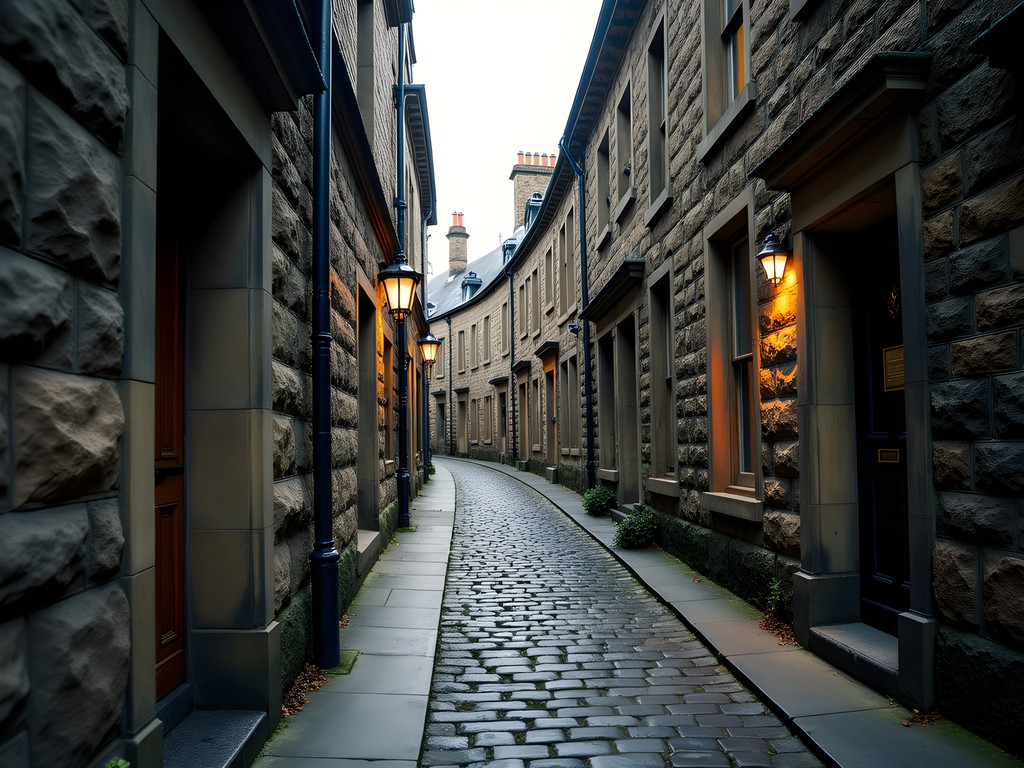
💡 Pro Tips
- Visit early on weekdays to have the museum nearly to yourself
- The museum is completely free, making it perfect for budget-conscious travelers
- Look for the quotes in Makars' Court that connect to places you've visited elsewhere in Scotland
The Real Mary King's Close: Edinburgh's Underground Time Capsule
While Mary King's Close has gained popularity in recent years, few visitors understand what they're actually experiencing. This isn't some manufactured attraction but rather a genuine slice of 17th-century Edinburgh preserved beneath the Royal Exchange.
As a detective, I've developed a sixth sense for distinguishing authentic history from tourist traps. When I brought the kids here on our second visit to Edinburgh, I was impressed by how accurately the close portrays the harsh realities of medieval urban life. The narrow, winding passage was once a bustling street where merchants lived and worked before it was partially demolished and built over in the 1750s.
Our guide, dressed in period costume, shared the close's dark history including tales of plague victims allegedly walled up alive (though historical evidence doesn't support this particular legend). Lina, my youngest, clutched my hand tightly as we descended into the underground streets, but her fear turned to fascination when we reached the preserved home of a wealthy merchant.
"The rooms are so small," she observed. "Even smaller than our hotel room!"
What makes this experience worthwhile is how it illuminates the vertical nature of old Edinburgh, where buildings stretched upward to ten stories and social classes were literally stacked on top of each other—the wealthy on middle floors, the poor in the attics and cellars.
Before visiting, I recommend reading up on Edinburgh's history with a good Edinburgh history book to fully appreciate what you're seeing. The tour guides are knowledgeable, but having background context enhances the experience significantly.
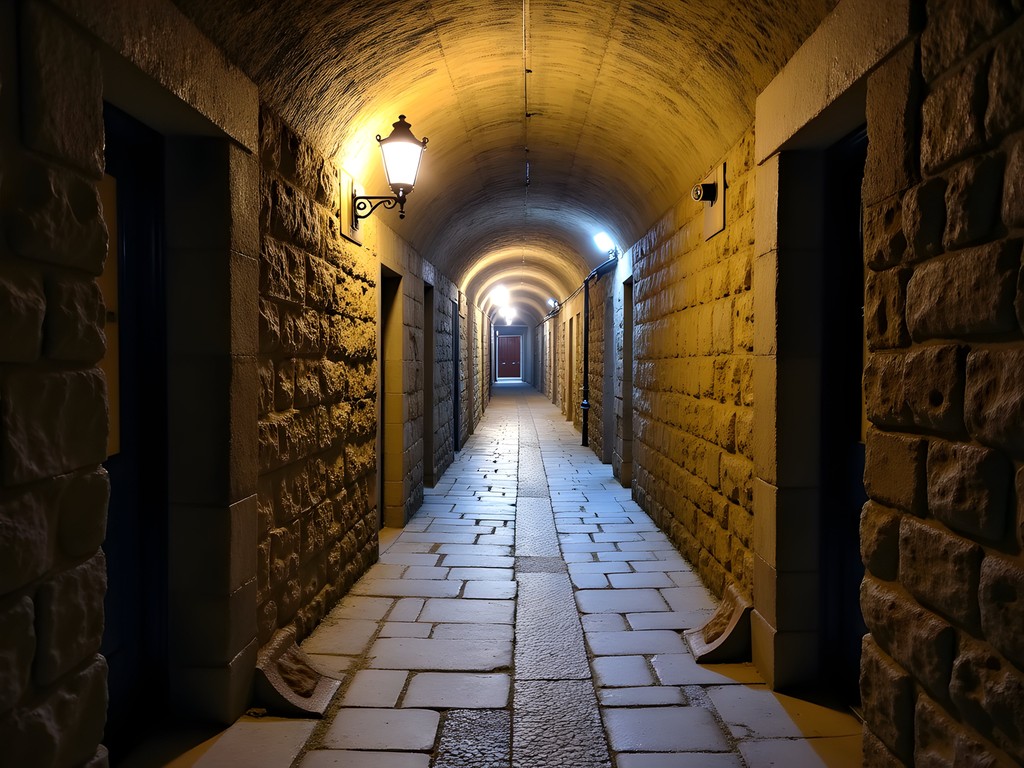
💡 Pro Tips
- Book your tickets online in advance—this attraction frequently sells out
- Photography isn't allowed inside, so be prepared to simply absorb the experience
- The temperature underground remains cool year-round; bring a light jacket even in summer
The People's Story Museum & Tolbooth
While tourists flock to the more famous museums, my investigative instincts led me to The People's Story Museum, housed in the 16th-century Canongate Tolbooth. This often-overlooked gem tells the story of ordinary Edinburgh residents from the 18th century to the late 20th century—the kind of social history that reveals more about a place than any collection of crown jewels.
On our most recent visit last fall, we spent a rainy afternoon exploring the exhibits. The museum uses realistic reconstructions and oral histories to bring working-class Edinburgh to life. My son Kai was particularly fascinated by the recreation of a prison cell (the building was once used as a jail and tax collection office).
"Dad, imagine being locked in here just for not being able to pay your taxes," he said, his detective father's sense of justice clearly taking root.
What makes this museum special is its focus on everyday people—the laborers, servants, factory workers, and tradespeople who built the city. Through personal artifacts, photographs, and firsthand accounts, visitors gain insight into how ordinary Edinburghers lived, worked, and fought for better conditions.
The museum's location in the historic Canongate area places you in a less touristy section of the Royal Mile, where you can still find traditional Scottish pubs and shops that haven't surrendered completely to souvenir merchants. After our visit, we ducked into a nearby café where Mia sketched the Tolbooth's distinctive exterior in her travel sketchbook while we enjoyed hot chocolate and traditional shortbread.
The museum isn't flashy or interactive like some modern attractions, but its authentic presentation of Edinburgh's social history provides context that makes everything else you see in the city more meaningful.
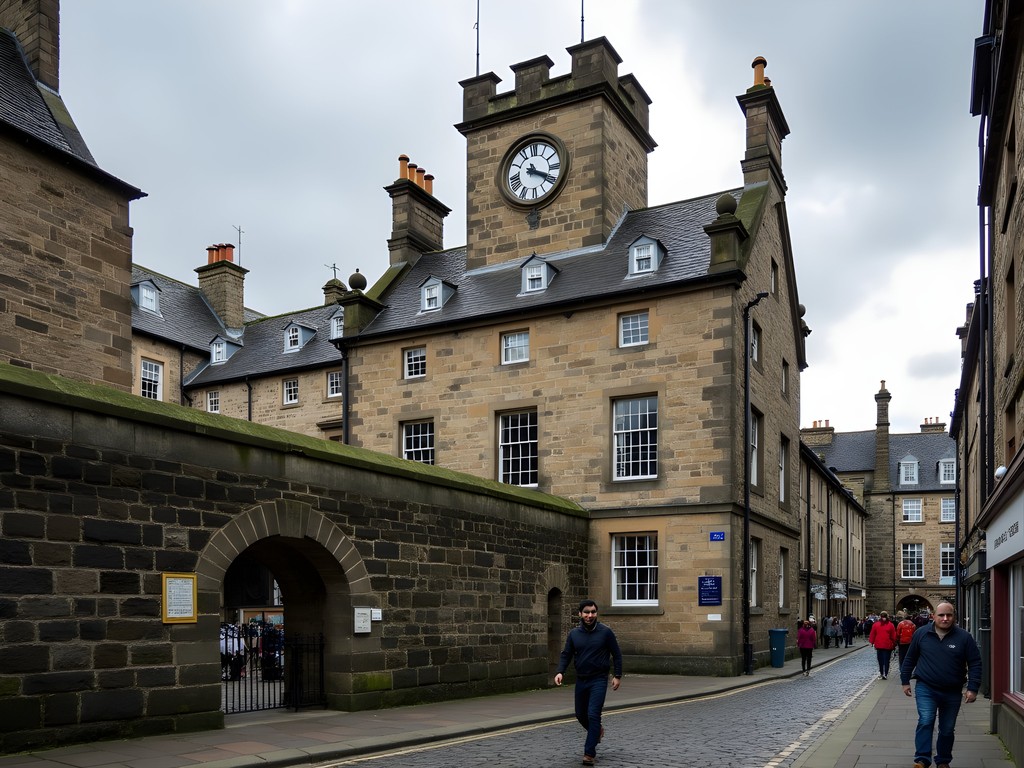
💡 Pro Tips
- Combine this visit with the Museum of Edinburgh just across the street
- Ask the knowledgeable staff about specific aspects of working-class history that interest you
- Visit on weekday afternoons when school groups are less likely to be present
Dunbar's Close Garden: A Hidden Oasis
One evening during our first Edinburgh trip, the kids and I were feeling overwhelmed by the Royal Mile's crowds and noise. Following my detective's intuition about finding quiet spaces, I noticed an unmarked close (alleyway) near the Canongate Kirk. Following this narrow passage led us to one of Edinburgh's best-kept secrets: Dunbar's Close Garden.
This meticulously maintained garden is designed in the style of a 17th-century formal garden, with geometric paths, carefully trimmed hedges, and hidden benches. Stepping through its gate feels like time travel—the Royal Mile's chaos instantly disappears, replaced by birdsong and the subtle fragrance of herbs and flowers.
"It's like we found a secret portal," Lina whispered, her imagination captivated by the hidden space.
The garden became our regular retreat during subsequent visits to Edinburgh. Last year, we brought a simple picnic lunch from a nearby shop and spent a peaceful hour watching the changing light on the old stone walls. Mia practiced her astronomy sketches—continuing her mother's passion—while Kai and Lina played a quiet game of chess on a travel chess set we bring on all our journeys.
What makes this garden special is not just its beauty but its authenticity. Created in the 1970s based on historical designs, it accurately represents the type of garden that would have existed behind wealthy Edinburgh homes in the 17th century. While not technically "historical" in the sense of being centuries old, it offers a genuine glimpse into how residents of Old Town would have escaped the city's notorious filth and noise in earlier centuries.
Best of all, this peaceful retreat remains unknown to most visitors despite being just steps from the Royal Mile. Even on busy summer days, you might have this tranquil garden entirely to yourself—a true rarity in Edinburgh's tourist-heavy Old Town.
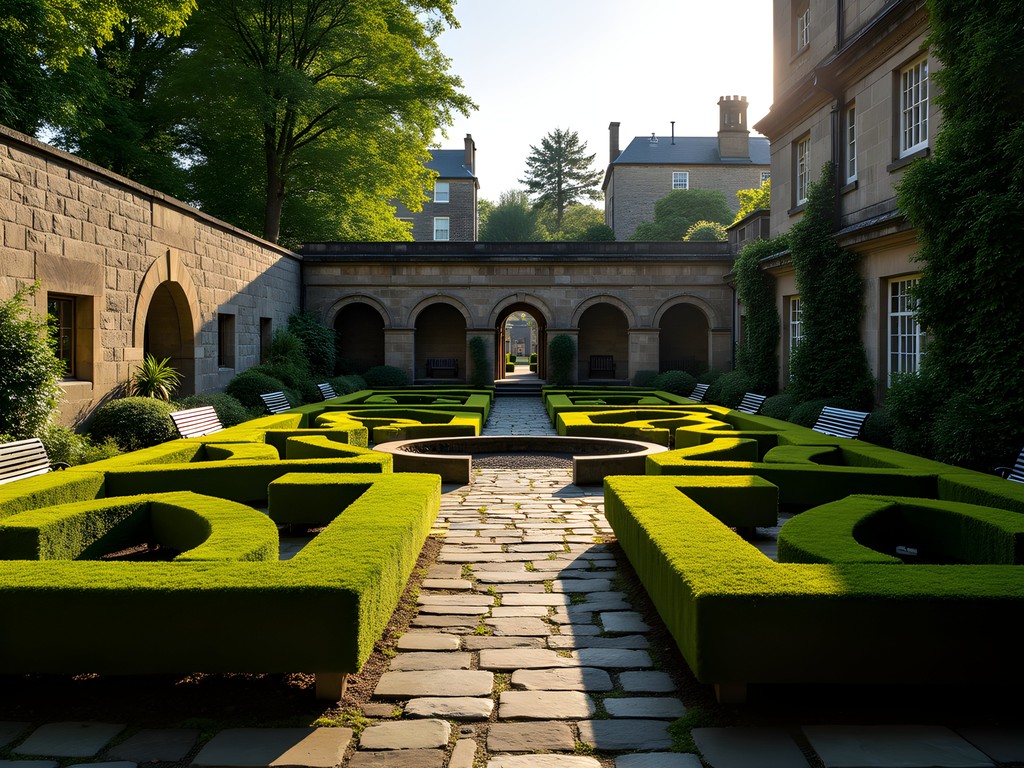
💡 Pro Tips
- Visit in late afternoon when the light is golden and most tourists have moved on to dinner or evening activities
- The garden is free to enter and open daily until dusk
- Bring a book or journal to fully appreciate the peaceful atmosphere
John Knox House & Scottish Storytelling Centre
As someone who values education through travel, I find the combination of the historic John Knox House and the modern Scottish Storytelling Centre to be one of the Royal Mile's most rewarding stops. This dual attraction offers both tangible history and living culture in one location.
John Knox House dates from the 1470s, making it one of the oldest original buildings on the Royal Mile. While associated with the controversial Protestant reformer John Knox, historical evidence suggests he likely only lived here briefly, if at all. Nevertheless, the house itself is a remarkable example of 15th-century Scottish urban architecture.
"Dad, the ceilings are so low!" Kai exclaimed during our tour. Indeed, the house's dimensions remind us that people were generally smaller in medieval times, but also that heating a space with high ceilings would have been impractical in cold, damp Edinburgh.
What fascinated my children most were the painted ceilings and the curious architectural details like the projecting timber galleries. The house contains period furniture and exhibits explaining the turbulent Reformation period in Scotland's history—a time when religious conflicts literally shaped the nation.
Attached to this historic building is the thoroughly modern Scottish Storytelling Centre, which celebrates Scotland's rich oral tradition. During our visit last year, we were fortunate to attend a storytelling session where a professional seannachie (traditional storyteller) performed tales of selkies, kelpies, and other creatures from Scottish folklore. Lina was so captivated that she barely blinked throughout the performance.
The centre hosts regular events, workshops, and performances, making it worth checking their schedule before your visit. I always pack my compact binoculars for examining architectural details in historic buildings, and they proved particularly useful for studying the decorative ceiling paintings in the Knox House that most visitors miss entirely.
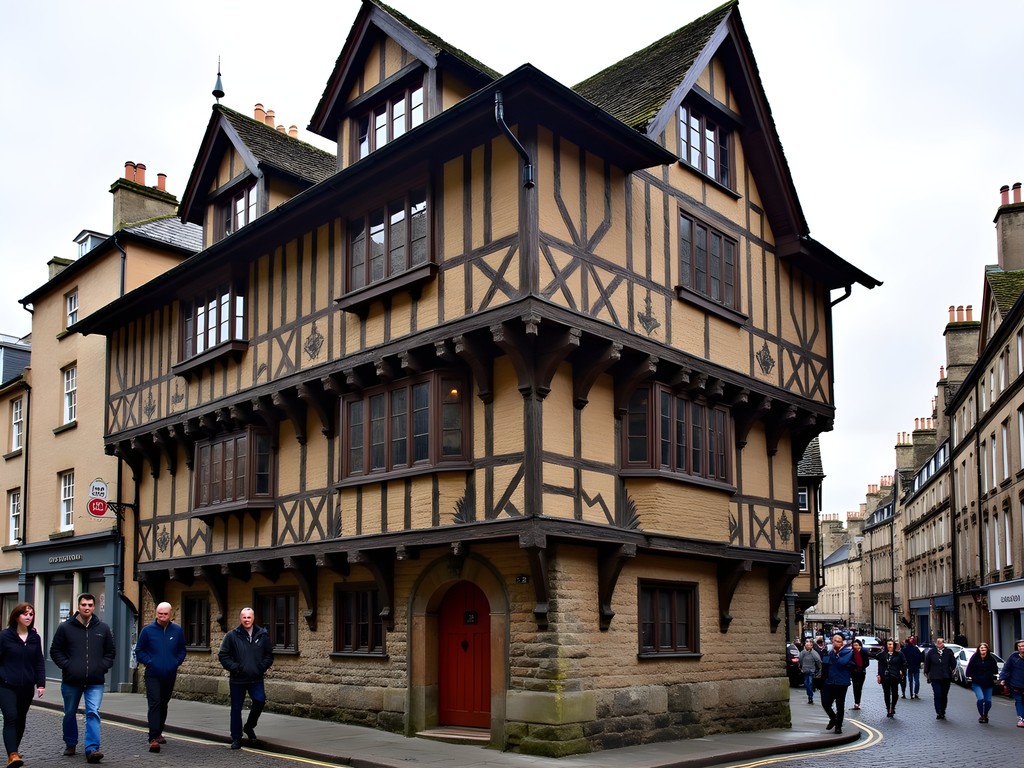
💡 Pro Tips
- Purchase a combined ticket for both the house and any storytelling events
- Visit on Thursdays when the centre often hosts lunchtime storytelling sessions
- Take time to examine the exterior of the building, which features fascinating historical details and a distinctive hanging sign
Stargazing from Calton Hill: Edinburgh's Astronomical Connection
While not technically on the Royal Mile itself, Calton Hill sits just beyond its eastern end near Holyrood Palace and offers one of my family's most treasured Edinburgh experiences. As a tribute to my late wife Eliza's passion for astronomy, we've made nighttime visits to this hill a tradition during each of our Edinburgh stays.
The hill is home to several monuments, including the unfinished National Monument (often called "Edinburgh's Disgrace" or "Scotland's Folly") and the City Observatory. What many visitors don't realize is that this observatory, established in 1776, played a significant role in the history of astronomy and timekeeping.
During our last visit, we timed our ascent of Calton Hill to catch both sunset over Edinburgh Castle and the emergence of stars above the city. The kids and I brought our portable telescope (a memorial gift from Eliza's university colleagues) and set up near the Nelson Monument.
"Mom would have loved this view," Mia said quietly as we took turns observing Jupiter and its moons. In that moment, I felt Eliza's Scottish heritage and her love of the stars connecting perfectly in this place.
What makes Calton Hill special for stargazing is its accessibility from the Royal Mile (about a 10-minute walk) combined with its elevation above much of the city's light pollution. While not a true dark sky site, it offers surprisingly good viewing conditions on clear nights.
The hill has another astronomical connection that I always share with my kids and blog readers: the Nelson Monument features a time ball that would drop at 1pm each day, allowing ships in the Firth of Forth to set their chronometers accurately—an essential tool for celestial navigation. This practice continued from 1852 to 1926, connecting timekeeping, astronomy, and maritime navigation in one ingenious system.
For those interested in both history and astronomy, timing your Royal Mile exploration to end with an evening on Calton Hill provides a perfect astronomical conclusion to a day of historical investigation.

💡 Pro Tips
- Bring a flashlight for the walk down after dark, as the paths aren't well-lit
- Check the weather forecast carefully—Edinburgh's notorious clouds can derail stargazing plans
- The hill can get windy even on mild evenings, so bring an extra layer
Gladstone's Land: Authentic 17th-Century Merchant Life
My detective's eye is always drawn to places that reveal how people actually lived in different eras, which is why Gladstone's Land has become one of our family favorites. Located near the top of the Royal Mile, this 17th-century tenement building has been meticulously restored by the National Trust for Scotland to show how merchants and their tenants lived in the 1600s.
When we first visited, I was struck by how the building represents Edinburgh's vertical social structure. The wealthy merchant owner occupied the best floors, while various tenants of decreasing social status lived above and below. The building's painted ceilings—rare surviving examples of decorative art from this period—immediately captivated Mia, who spent nearly half an hour photographing the intricate patterns.
"It's like Instagram for the 1600s," she observed. "They were showing off their wealth and taste just like people do online today."
What makes Gladstone's Land special is its focus on commercial life. Unlike properties that showcase aristocratic living, this building tells the story of Edinburgh's merchant class—the backbone of the city's economy. The ground floor shop booth, with its opening directly onto the Royal Mile, helps visitors understand how business was conducted in an era before department stores or online shopping.
During our most recent visit, we participated in a special tasting tour that included samples of foods and drinks that would have been sold and consumed in the building during the 17th century. The exotic spices and imported wines reminded us that Edinburgh was an internationally connected trading city even 400 years ago.
The building's narrow turnpike stair and low doorways provide physical evidence of how different daily life was in earlier centuries. I'm always careful to remind my taller friends to duck when visiting! After exploring the property, we enjoyed comparing our observations in a nearby café, where I recorded details in my travel notebook for later blog posts.

💡 Pro Tips
- Book a guided tour rather than self-guiding to access the fascinating historical details
- Visit early in your Edinburgh trip, as understanding the city's housing structure enhances everything else you'll see
- Look for the original painted beam in the entrance area that was discovered during restoration
The Mysterious Closes and Wynds
As a detective, I'm naturally drawn to Edinburgh's mysterious network of closes and wynds—the narrow alleyways that branch off the Royal Mile like ribs from a spine. While Mary King's Close gets the most attention, dozens of these atmospheric passages remain open to public exploration, each with its own history and character.
During our family's Edinburgh adventures, we've made a game of exploring as many closes as possible, with each child getting to choose one per day to investigate. Some lead to hidden courtyards, others to spectacular viewpoints, and a few to dead ends or private residences. The thrill of discovery makes each exploration memorable.
Anchor Close, for instance, once housed one of Scotland's most important printing businesses and was frequented by poet Robert Burns. When we visited, Kai noticed the carved stone emblems that hint at the close's printing history.
Advocate's Close offers one of the Royal Mile's most photographed views, with a narrow passage framing a spectacular vista toward the New Town and Firth of Forth beyond. Lina declared it "the most perfect picture spot in all of Edinburgh" during our last visit.
White Horse Close, though slightly off the main Royal Mile, rewards explorers with a beautifully preserved courtyard that once served as the starting point for the London coach service. Its distinctive architecture makes it feel like stepping onto a movie set.
Tweeddale Court hides a literary secret—it was here that Sir Walter Scott encountered the real-life inspiration for his character Madge Wildfire from "The Heart of Midlothian." When I shared this story with Mia, who was reading Scott's works for a school project, literature suddenly became connected to physical place in a way textbooks never achieve.
Exploring these closes is best done with comfortable shoes and a sense of adventure. I always bring my pocket flashlight for peering into shadowy corners and reading historical plaques in dimly lit passages. While most closes are perfectly safe during daylight hours, they can feel intimidating after dark, so plan your explorations accordingly.
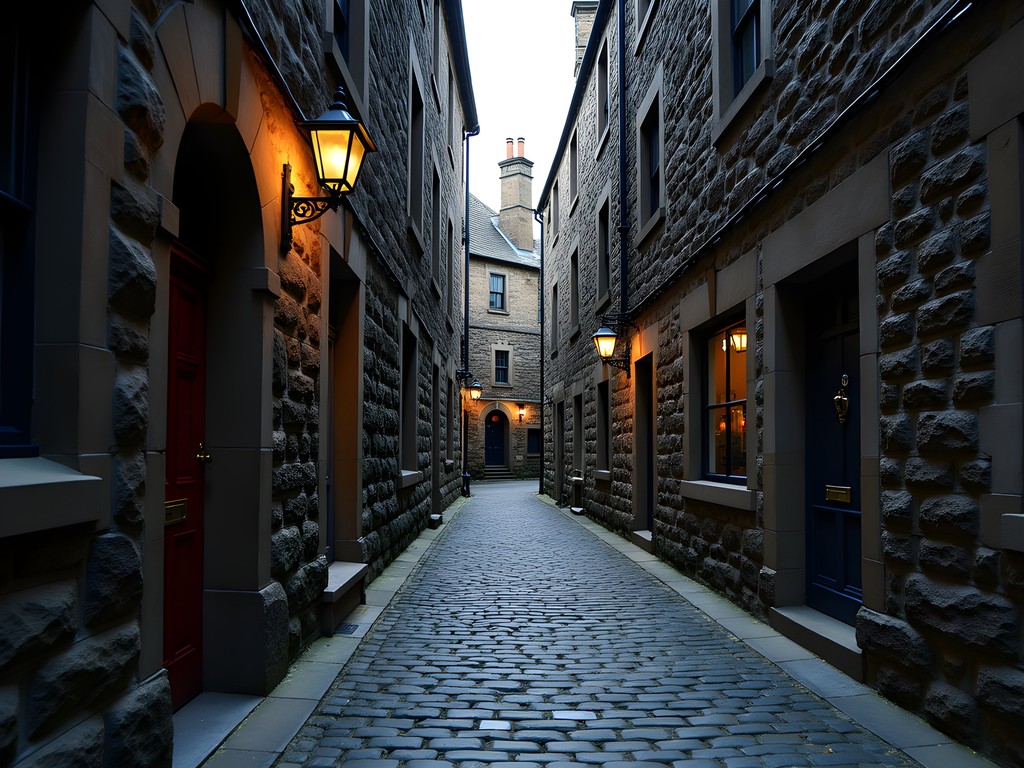
💡 Pro Tips
- Look up as well as around—many closes have fascinating architectural details above eye level
- Respect that some closes contain private residences and businesses
- Visit the same close at different times of day to see how dramatically the lighting changes the atmosphere
Astronomical Connections: Camera Obscura & Outlook Tower
When Eliza was alive, no trip to any city was complete without finding its astronomical connections. Edinburgh's Camera Obscura and World of Illusions might seem like just a quirky attraction for children, but it actually houses one of the city's most fascinating scientific instruments with deep astronomical roots.
Located near Edinburgh Castle at the top of the Royal Mile, this six-story attraction culminates with a Victorian camera obscura—essentially a giant pinhole camera that projects a live moving image of Edinburgh onto a viewing table. During our first visit after Eliza passed, I found myself unexpectedly emotional watching the children marvel at this 19th-century technology.
"Mom would have explained exactly how this works," Kai said, prompting Mia to step in with the physics lesson her mother would have given.
The camera obscura itself connects to astronomy through the history of optics—the same principles that allow telescopes to gather light from distant stars. The device was installed in 1853 by Maria Theresa Short, a remarkable female entrepreneur who originally established it as "Short's Observatory" with astronomical instruments. This connection to a female pioneer in science and astronomy makes it especially meaningful for our family.
Beyond the camera obscura itself, the building offers spectacular 360-degree views from its rooftop terrace. On clear nights during our visits, we've identified key stars and constellations from this vantage point, continuing Eliza's tradition of finding urban stargazing opportunities.
The lower floors contain various optical illusions and interactive exhibits that delight children and adults alike. My kids particularly enjoy the vortex tunnel and mirror maze, while I appreciate how many exhibits demonstrate scientific principles in accessible ways.
For the best experience, I recommend bringing a star chart if you'll be visiting the rooftop near dusk. While primarily a daytime attraction, the views during the "blue hour" just after sunset can be magical, with Edinburgh Castle dramatically lit against the darkening sky.
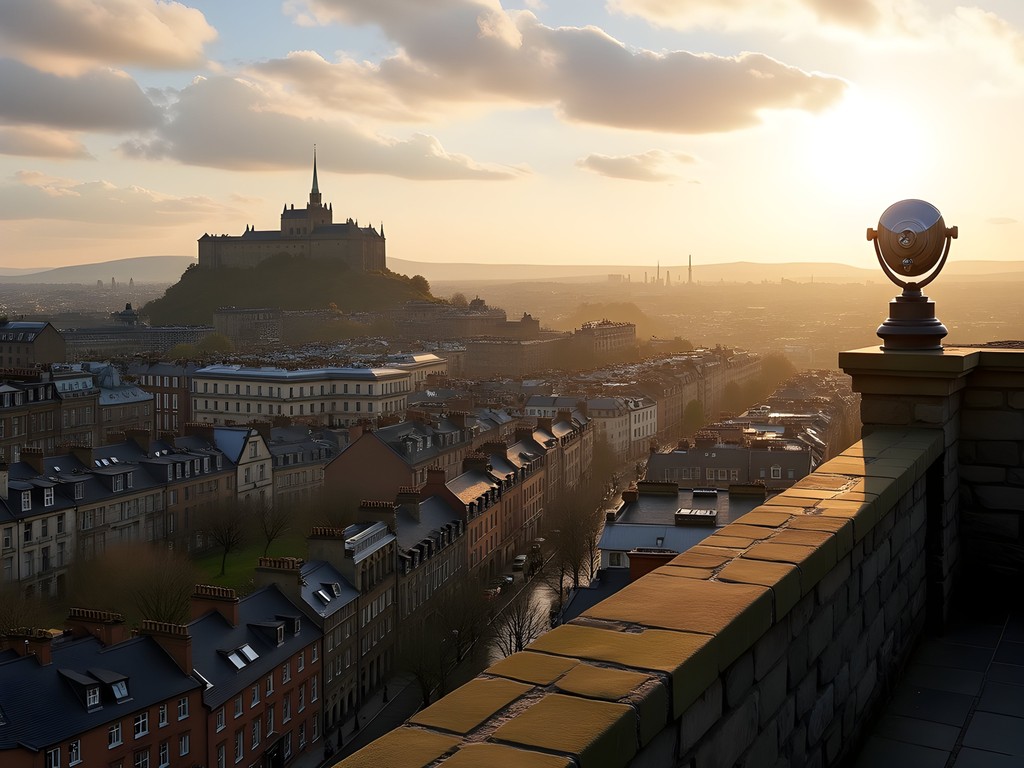
💡 Pro Tips
- Visit late in the day when crowds thin out and you might get a more personalized camera obscura demonstration
- Allow at least two hours to fully experience all floors of exhibits
- Check the weather forecast—the camera obscura works best on clear days, and cloudy conditions can limit its effectiveness
Bakehouse Close & The Real Outlander Connection
My detective background has taught me to distinguish between fictional portrayals and historical reality—a skill that serves me well when visiting Bakehouse Close. This atmospheric alleyway off the Royal Mile has gained popularity in recent years as a filming location for the television series "Outlander," where it stands in for the print shop on Carfax Close.
During our most recent Edinburgh visit, Mia (our family's resident history buff) was determined to see this location. What we discovered was much more than a television set—Bakehouse Close is home to the real-life Acheson House, built in 1633 and now housing the Scottish Conservation Trust. The close itself dates back centuries and provides one of the most authentic glimpses of what Edinburgh would have looked like in the 17th and 18th centuries.
"It feels like we've actually time-traveled," Lina whispered as we walked the worn stone path.
What makes Bakehouse Close worth visiting isn't its fictional connection but its historical authenticity. The buildings here have survived largely intact, with their original proportions and features preserved. The archway entrance, worn stone steps, and multilevel architecture tell the story of how Edinburgh's Old Town developed vertically when constrained by its defensive walls.
Perhaps most interestingly, Bakehouse Close connects to the real history of printing and publishing in Edinburgh. While not actually the site of Alexander Malcolm's fictional print shop from "Outlander," the close was historically home to various trades and crafts, potentially including baking (as its name suggests) and possibly printing—Edinburgh was a major center for publishing during the Scottish Enlightenment.
During our exploration, I used my pocket guidebook to identify architectural features we might have otherwise missed. The close is typically quiet compared to the Royal Mile itself, allowing for unhurried exploration and photography without crowds—a rarity in Edinburgh's Old Town.
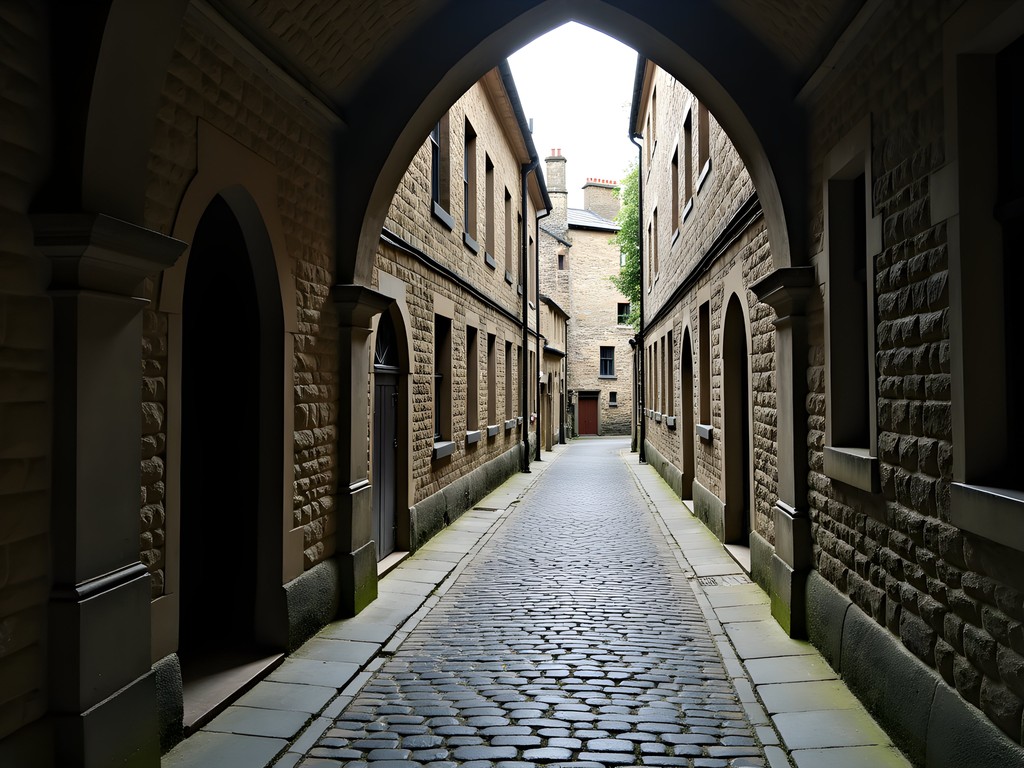
💡 Pro Tips
- Visit early morning or evening when the light creates dramatic shadows in the close
- Look for the distinctive carved stone panel on Acheson House featuring the emblem of the original owner
- Respect that parts of the close contain private residences and offices
Final Thoughts
As our family stood at the bottom of the Royal Mile on our last evening in Edinburgh, watching the sunset illuminate Holyrood Palace, I found myself reflecting on how this street had become a thread connecting us to Eliza's Scottish heritage. The Royal Mile isn't just a tourist thoroughfare—it's a living timeline where each close, wynd, and hidden garden tells part of Edinburgh's complex story. Like any good detective case, the city reveals its secrets gradually to those patient enough to look beyond the obvious. Whether you're visiting as a couple seeking connection through history or simply wanting to experience Edinburgh beyond the postcard views, I encourage you to follow your curiosity down those narrow passages. The real Edinburgh waits to be discovered in the spaces between the famous landmarks, in the quiet corners where centuries of stories linger in the stone. As Eliza would say when stargazing with our children: 'The brightest objects catch your eye first, but the real wonders reveal themselves when you know where to look.'
✨ Key Takeaways
- Edinburgh's most authentic experiences often hide in the narrow closes and wynds branching off the Royal Mile
- Visit early mornings or evenings to avoid crowds and experience these historical sites in better light
- Many of the Royal Mile's best attractions are free or low-cost, making historical exploration budget-friendly
- Connecting sites to their astronomical or scientific history adds another dimension to Edinburgh's already rich historical landscape
📋 Practical Information
Best Time to Visit
Year-round, though May and September offer pleasant weather with fewer crowds
Budget Estimate
£10-30 per day excluding accommodation (many sites are free or under £10)
Recommended Duration
2-3 days to properly explore the Royal Mile and its hidden gems
Difficulty Level
Easy To Moderate - Some Closes Have Uneven Cobblestones And Steps
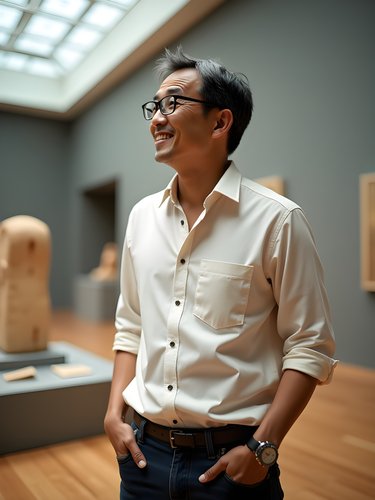
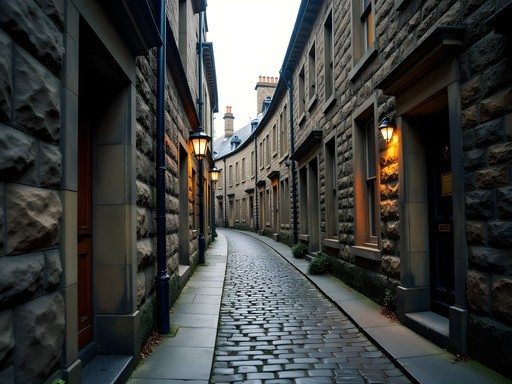
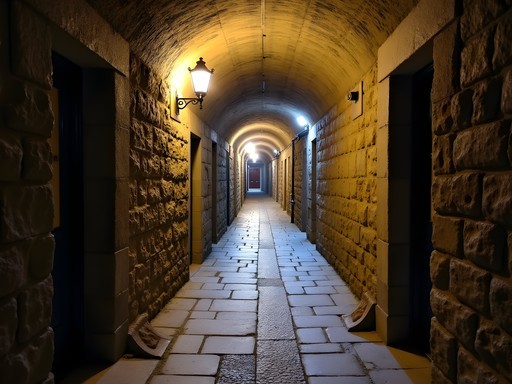
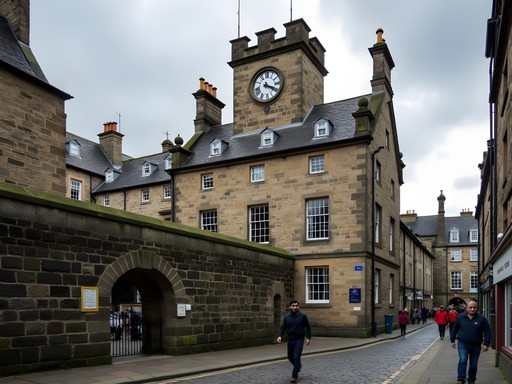
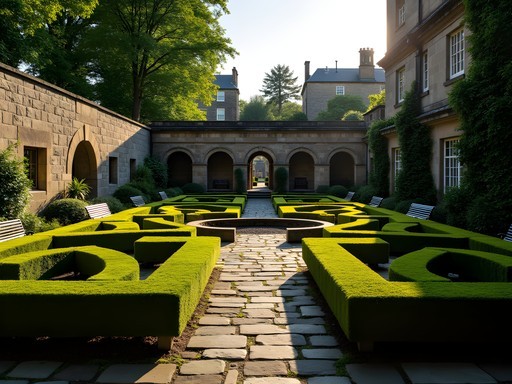
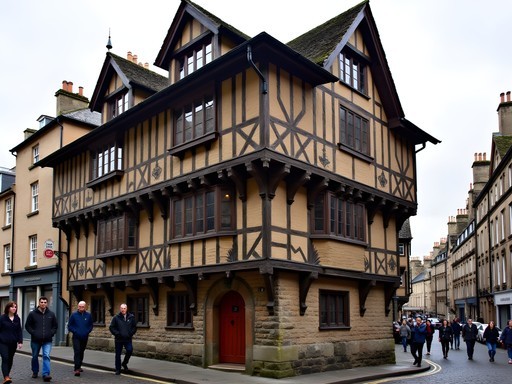
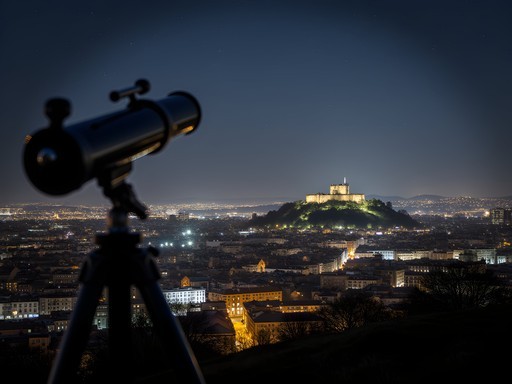




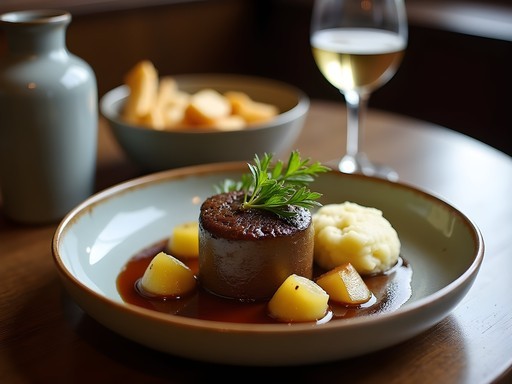
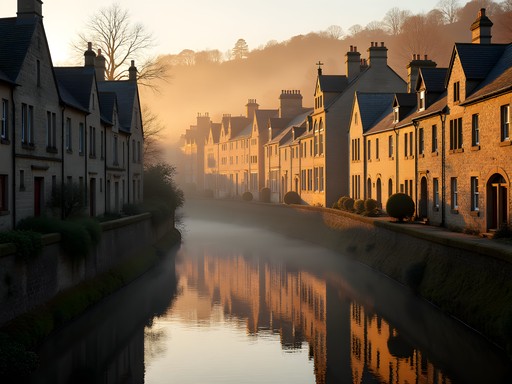

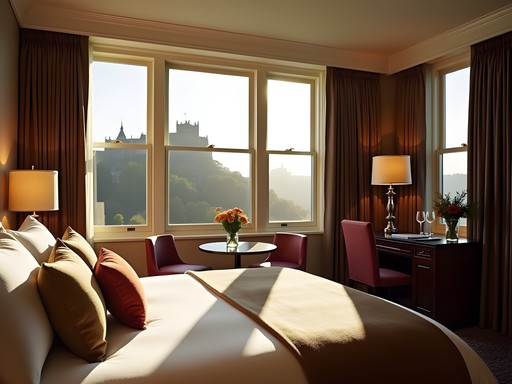


Comments
globeguy
That sunset photo of Holyrood Palace is stunning! What camera do you use?
Kenji McDonald
Thanks! Just my phone actually - Pixel 6. Edinburgh gives you those magical light moments if you're patient!
WanderingGrandma
That photo of your kids in the garden is precious! What a special trip to connect them with their heritage.
springexplorer
Going to Edinburgh with my kids (7 and 10) next month! How kid-friendly was The People's Story Museum? And any tips for keeping them engaged on the Royal Mile? My daughter loves history but my son needs more interactive stuff.
redadventurer
My kids loved the street performers near St Giles! Also, there's a Camera Obscura museum that's super hands-on and interactive - my son spent hours there. Bring a good guidebook too - we used Edinburgh with Kids and it had great scavenger hunt ideas.
springexplorer
Thanks so much! Camera Obscura sounds perfect for my son. Will definitely check out that guidebook too!
wavequeen
Thank you for writing this! Just got back from Edinburgh with my kids (similar ages to yours) and we followed your recommendations. Dunbar's Close Garden was such a peaceful break from the crowds! The kids were getting cranky from all the walking until we found this little green haven. We had packed sandwiches and had an impromptu picnic there. Also, the People's Story Museum was WAY more interesting than it sounds - my 11-year-old son was fascinated by all the old tools and stories of everyday life.
HikingDad50
Great post! How long would you recommend setting aside for the Royal Mile if we want to explore these hidden spots? Is it doable in one day?
Kenji McDonald
I'd recommend at least two days to really enjoy these spots without rushing. We did it in one very full day but missed being able to linger in places like the Writers' Museum. If you only have one day, pick 3-4 must-sees rather than trying to do it all!
Douglas Bradley
Completely agree with Kenji. One day is possible but rushed. I'd suggest starting at the Castle early morning (book tickets in advance!) and working your way down. The closes (alleyways) are less crowded in the morning too.
Taylor Moreau
Kenji, what a lovely tribute to both Edinburgh and your late wife's heritage. I visit Edinburgh regularly for business and always try to explore a bit of the Royal Mile when time permits. Dunbar's Close Garden is indeed a hidden gem - I often bring my lunch there for a peaceful break from meetings. Another spot worth mentioning is Gladstone's Land on the upper Royal Mile - a 17th-century merchant's house that gives you a real sense of how people lived. I appreciated how you balanced historical information with your family's personal journey. That connection makes travel so much more meaningful.
springexplorer
Thanks for mentioning Gladstone's Land! Adding it to my list for next month's trip.
redadventurer
Mary King's Close was the highlight of our trip! So spooky but fascinating. My kids still talk about it months later.
Taylor Moreau
It really is special! Did you do the guided tour? The costumed guides add so much to the experience.
redadventurer
Yes! Our guide was amazing - really brought the history to life. My 11-year-old was a bit scared but ended up loving it!
TravelWithTeens
Just got back from Edinburgh and used your guide with my teenagers! The Writers' Museum was a surprising hit with my 16-year-old who's into literature. We also stumbled upon the Storytelling Centre further down the Mile which had a great interactive exhibit that kept even my phone-obsessed 14-year-old engaged. The Real Mary King's Close was definitely the highlight though - our guide was hilarious and spooky in equal measure. Thanks for helping us discover the less touristy side of the Royal Mile!
islandvibes
Thanks for mentioning the Storytelling Centre! Adding that to my list now.
freeone7930
Tolbooth was closed when I went. Need to go back!
ScottishRoots22
As an Edinburgh local, I'm impressed you found Dunbar's Close! Even some locals don't know about that peaceful spot.
Venture X
Premium card with 2X miles, $300 travel credit, Priority Pass